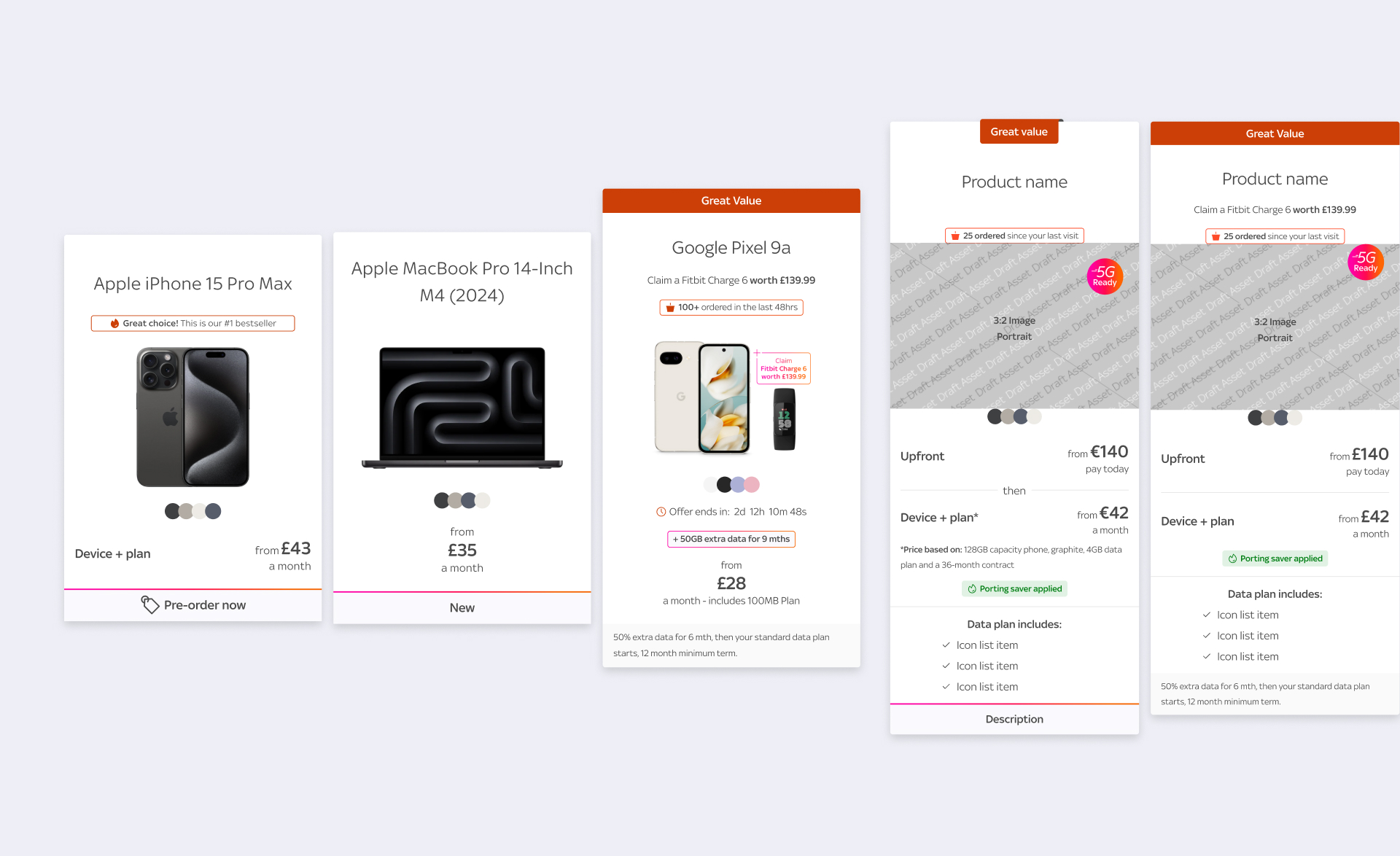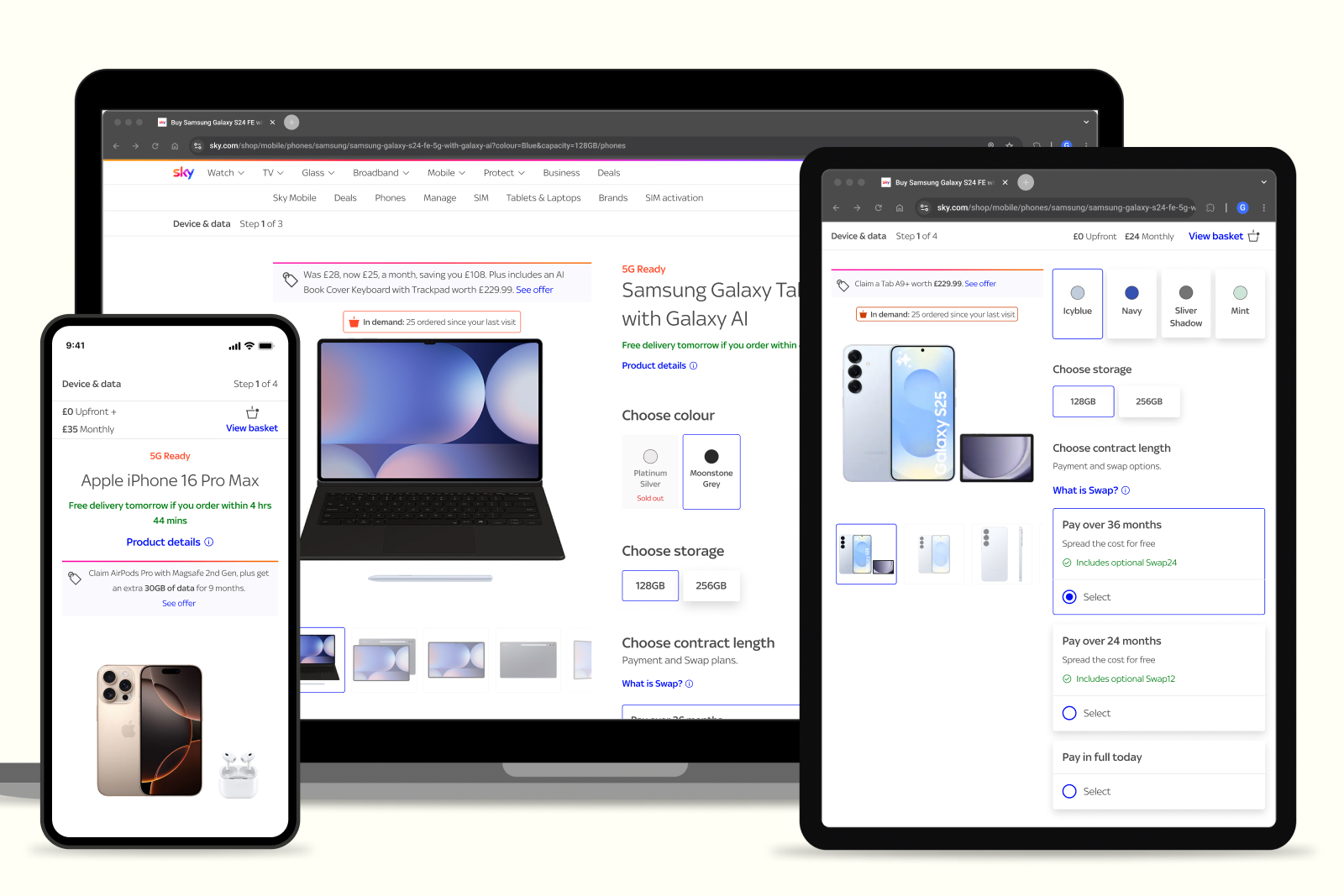From Pain to Purchase
Since June 2023, I’ve been working as the Lead Product Designer (UX/UI) for Sky’s Mobile Value Stream (MVS), shaping complex customer journeys within an Agile Release Train structure. With over 7 years of experience in product design — including 2+ years leading holistic design initiatives as a senior design leader — I bring a strong blend of strategy, craft and cross-functional leadership to every challenge.
Sky Mobile’s PLP redesign was a perfect opportunity to combine my deep passion for product and UX design with a focus on business results by satisfying users needs. My role, embedded in a fast-paced SAFe Agile environment, allowed me to work collaboratively with developers, analysts, content editors and commercial stakeholders. With an aim to deliver experiences that are not only functional, but delightful and impactful.
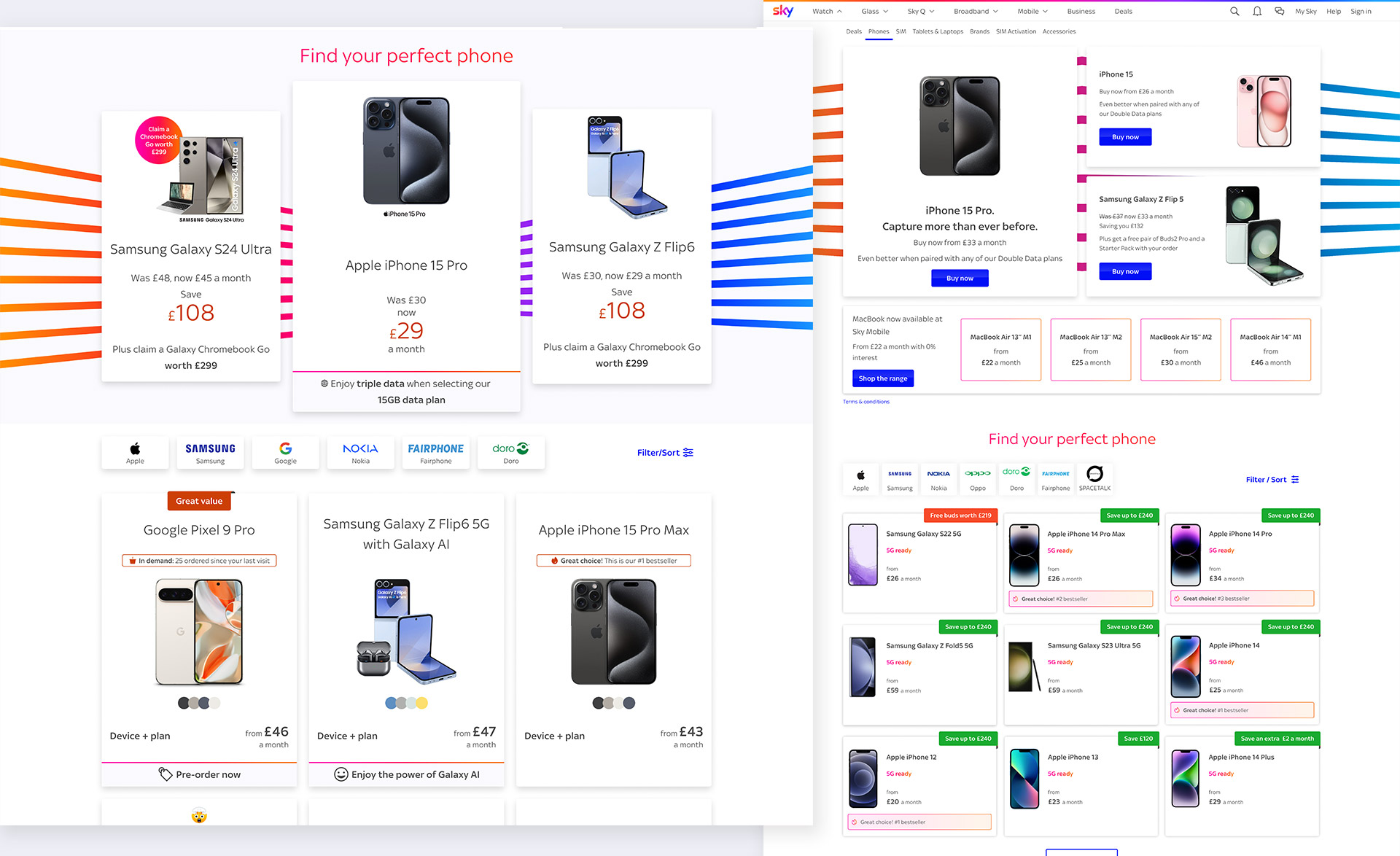
Problem framing and opportunity
The Product Listing Page (PLP) plays a critical role in the eCommerce journey — helping users compare and select phones, tablets, and laptops.
However, research and user testing (particularly on mobile viewports) revealed friction: many users struggled to find the product cards. The upper portion of the page was dominated by three stacked merchandising panels and a “Tablets and Laptops” section, pushing key content — phones — further down the fold.
This layout confused users, obscured their goals and led to high drop-off rates. It also hindered performance during commercial peaks.
Drawing on my multi-disciplinary expertise in UX, UI and visual design, I led the creation of a new PLP experience — one that could balance user needs with commercial requirements, all whislt working through ambiguity and tight timelines.
My team and I focused on three core improvements:
- Reducing scroll and prioritising the content users care about
- Enhancing filter usability through clearer placement and accessibility
- Redesigning product cards for clarity, scannability and emotional impact
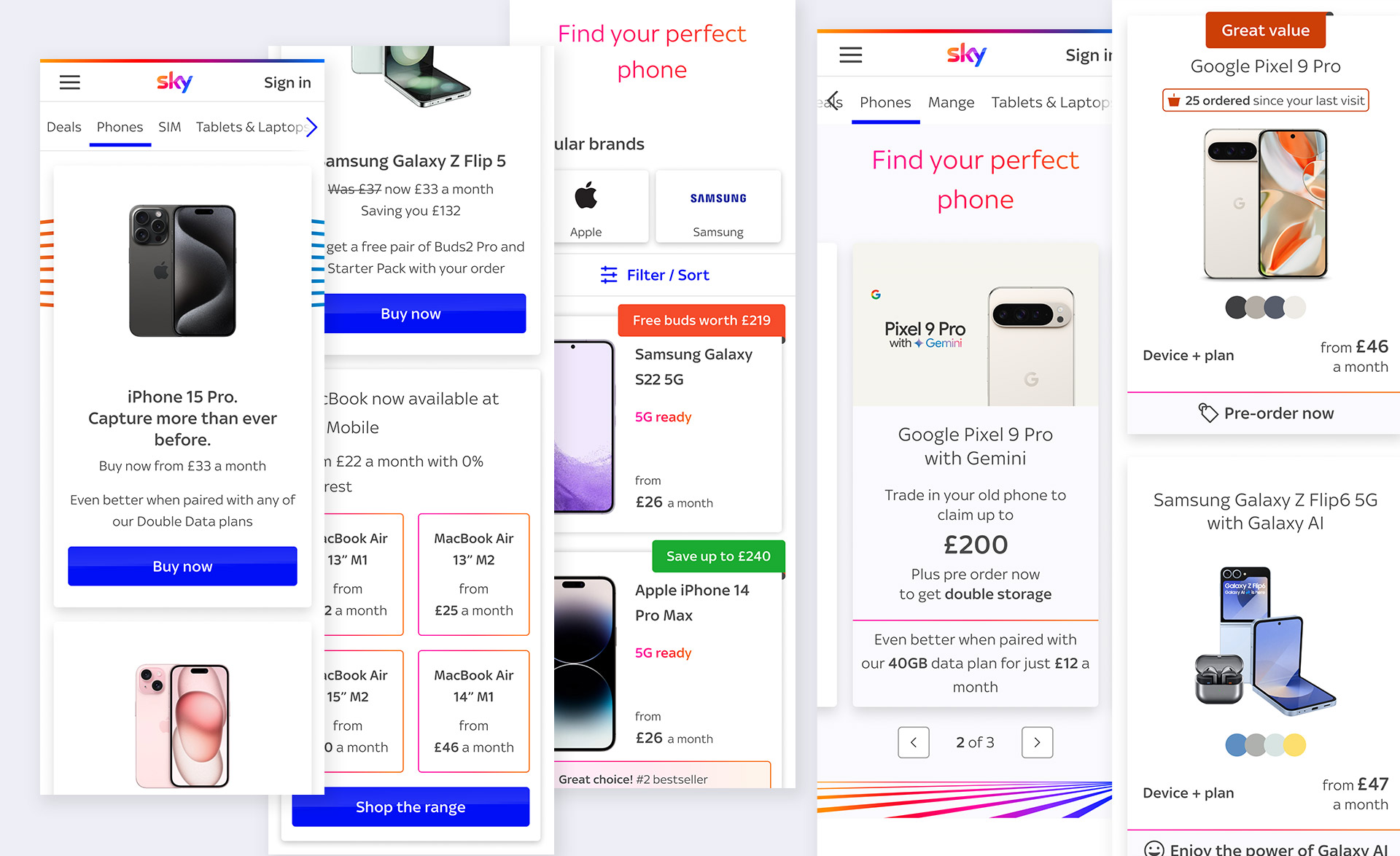
The new product card design
Following several design sprints and usability tests, the new card structure emerged with a more deliberate hierarchy and pared-back UI. Each element was designed to be accessible, scalable, and user-friendly:
- A marketing headline to surface propositions like “Trade-in & Save” or “Bundle & Save”
- Device name placed clearly below the headline
- Add-on messaging to highlight bundles or offers
- Social proof (e.g. quantity bought since your last visit)
- A large product image to make the device the visual hero
- Colour swatches to indicate available variants
- A transparent “from” price-point
- Legal T&Cs displayed in a clear, accessible way
The cards are now fully clickable, designed for keyboard navigation and screen reader compatibility — aligned with WCAG accessibility guidelines. As someone who thrives on driving clarity from complexity, these enhancements reflect my belief that accessibility and simplicity go hand in hand.
Top of page merchandising
We also reworked the top section’s merchandising layout. Rather than three stacked promotions, we implemented a new inline row layout — with a larger central tile for emphasis and two supporting side-tiles on a desktop and tablet viewport.
From a mobile point of view the tiles sit in a carousel with focus on the central card (main selling point)
A configuration that improves content discoverability without hiding too much the core product listing section.
Cross-functional execution
Being deeply embedded within the development team, I collaborated (and collaborate) daily with engineers to ensure smooth implementation. The design system was adapted and scaled in partnership with front-end developers, while product managers and content strategists helped align the UI with broader commercial goals.
This wasn’t just execution — it was design facilitation, where I led workshops, presented design rationale, and continuously drove alignment. My strong communication and storytelling skills helped bridge disciplines and inspire action across the team.
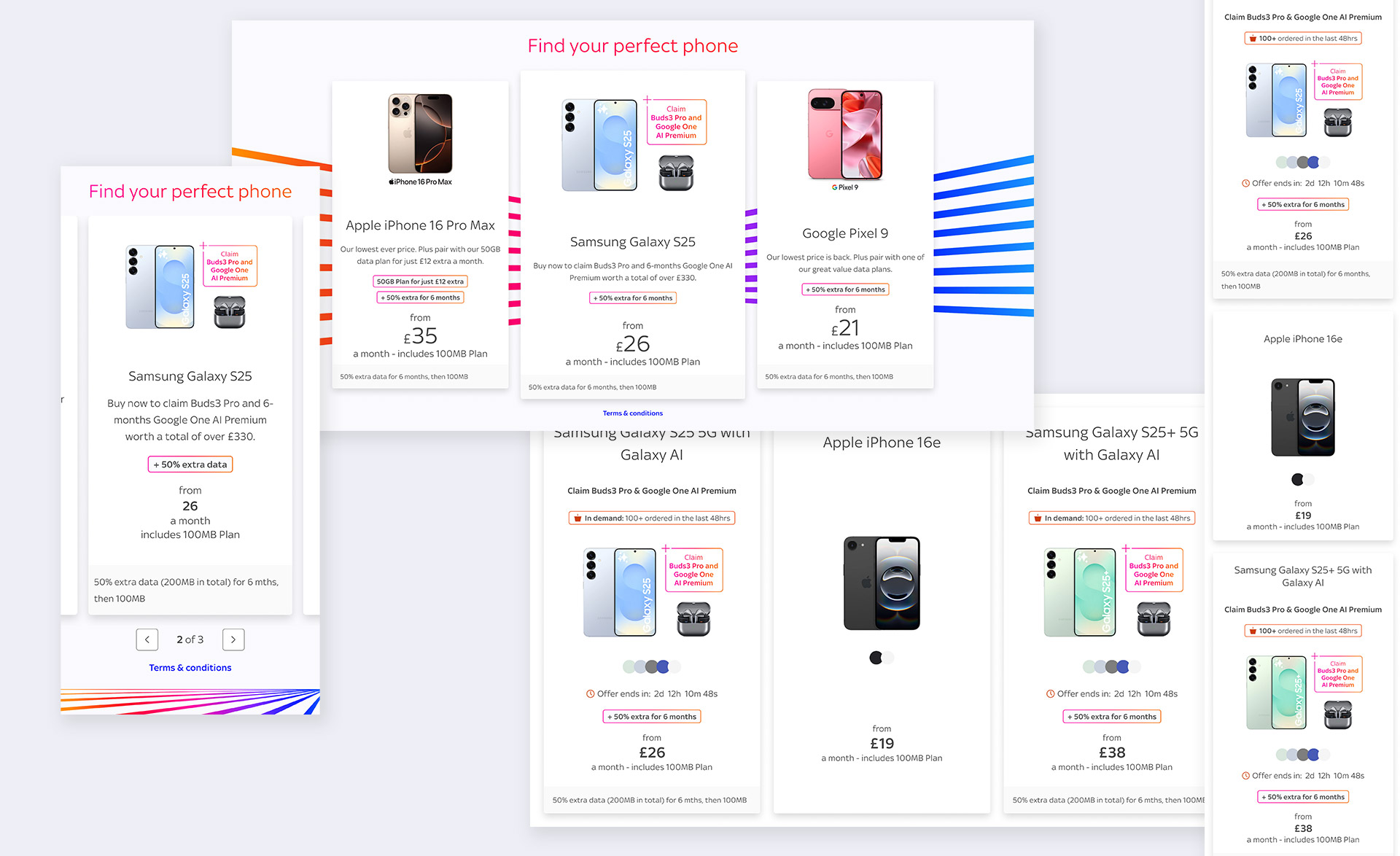
Impact
From January 6 to February 10, 2025, we ran an A/B test with a 50/50 traffic split. The results speak for themselves:
- Control conversion rate: 5.2%
- Variant conversion rate: 7.51%
- Result: +44.6% uplift in conversion
This dramatic uplift validated our design decisions and proved that balancing user-centred design with business objectives is not only possible — it’s powerful.
Looking ahead
Future iterations will focus on further on including targeted marketing messages, extra data offers gated behind devices (exclusive data plans for specific phones and other devices) as well as performance, clear illustrated in image 4
Final considerations
This project is a great example of data-informed design meeting craft, empathy, and commercial strategy. It reflects the core of how I work: with curiosity, clarity and a deep care for both users and the teams I build with.
I firmly believe that by fostering a culture of multi-disciplinary collaboration — that allows each and every team member to share their ideas and to open up freely — one can achieve the best possible results. By working together and in harmony teams are able to design well-rounded products that satisfy customers' needs and fulfil business objectives.
In parallel, I’ve helped the junior designers in my team acquire a deep understanding in shaping deliverables, whilst facilitating a better appreciation about our design culture and the meaning of professional growth.
